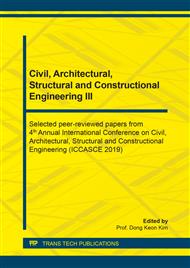p.78
p.85
p.91
p.98
p.106
p.111
p.117
p.124
p.129
Computation of the Surface Materials Modification by Plasma Technology
Abstract:
Experimental studies of plasma surface treatment processes of various materials are difficult since temperatures of the surface are more than 1500-3000 K, the speed of their change is high (104 K/s), the front of melting is moving. Theoretical researches of the thermal modes are necessary for conducting plasma processes in the best possible way. The use of analytical decisions at impulse thermal influence on the surface allows to calculate temperatures on the surfaces and in the mass of the material under almost any boundary conditions. The paper presents the results of calculation of various plasma processing at dielectric and steel materials (hardening, welding), as well as comparison of the obtained design parameters with experimental values.
Info:
Periodical:
Pages:
106-110
Citation:
Online since:
April 2020
Authors:
Price:
Сopyright:
© 2020 Trans Tech Publications Ltd. All Rights Reserved
Share:
Citation:


